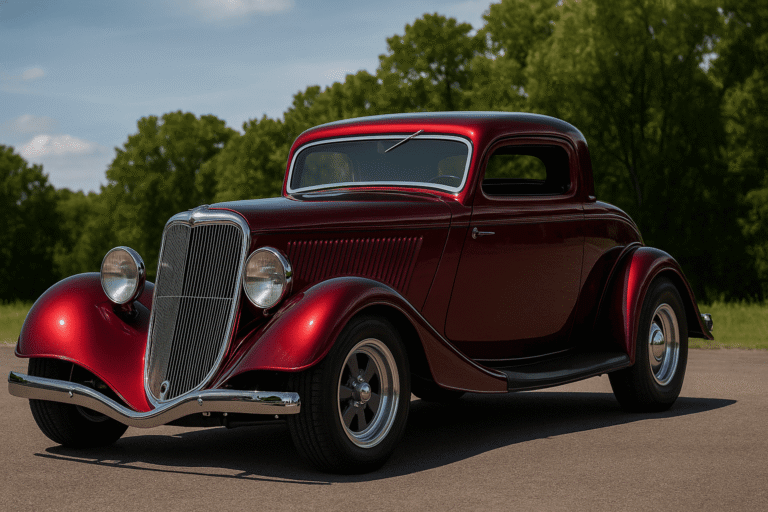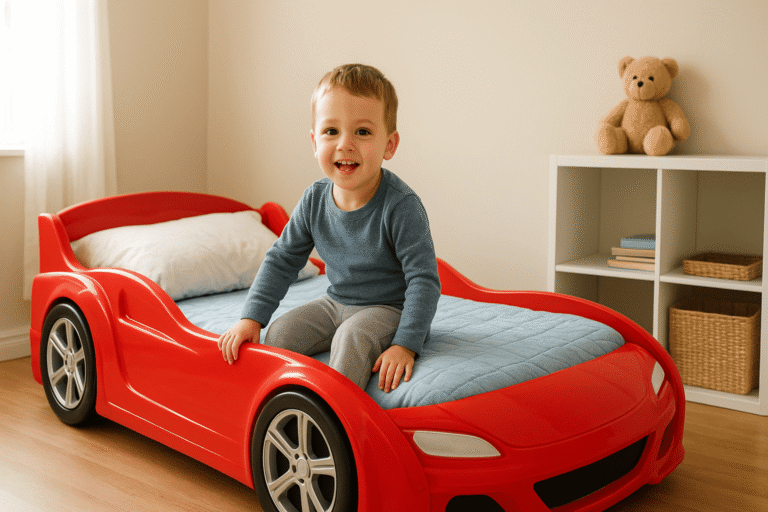T-Boned Car: Causes, Risks, and What You Need to Know
When driving, one of the most dangerous types of accidents that can happen is a t-boned collision. A T-Boned Car accident is when one vehicle strikes the side of another at a right angle, creating a “T” shape. These accidents often lead to serious injuries, as the side of the vehicle offers less protection compared to the front and rear.
If you’ve ever wondered about t-boned cars, how they occur, and how to avoid them, this post will provide insight into these collisions and what you can do to stay safe.
“You can also read more about it on our featured pagehttps://ridenplay.online/toddler-car-bed/
What Is a T Boned Car?
A t-boned car refers to a situation where one vehicle is struck on its side, typically by another vehicle coming from a perpendicular direction. This kind of collision often occurs at intersections or when one vehicle runs a red light or stop sign. The impact usually happens at high speeds, making these accidents particularly hazardous.
In such collisions, the car struck on the side is most vulnerable because there is less structural reinforcement compared to the front or rear of the vehicle.
Causes of T Bone Accidents
T-bone accidents can happen for various reasons, but some common causes include:
Running a Red Light or Stop Sign:
One of the most frequent causes of a t-bone accident is when a driver runs a red light or stop sign. This can lead to another vehicle hitting the side of the car, creating the T-shaped collision.
Failure to Yield:
When a driver doesn’t yield the right of way at an intersection, it can result in a t-bone crash. Many drivers assume other drivers will stop, but this often leads to deadly accidents.
Speeding:
Speeding increases the severity of any collision. If a driver is speeding through an intersection, the impact of a t-bone collision can be devastating.

Distracted Driving:
Distracted drivers, whether looking at their phone, eating, or talking to passengers, can miss traffic signals or signs and cause a t-bone accident.
Impaired Driving:
Driving under the influence of alcohol or drugs severely impairs a driver’s ability to make quick and safe decisions, increasing the likelihood of a t-bone collision.
If you are interested in sport and other accessories you should take a look at College Football Scores – Latest Updates and Insights on NCAA Games
The Risks and Consequences of a T Boned Car Collision
T-bone accidents carry significant risks. Because the sides of vehicles are less protected than the front or back, the force of a t-bone crash can cause severe injuries, particularly to the people sitting in the impacted side of the car. Some of the most common injuries in t-bone collisions include:
Whiplash:
The sudden jolt of a side-impact collision can cause whiplash, which involves the neck and upper back muscles and ligaments being strained.
Trauma to Internal Organs:
The force from the impact can cause serious damage to internal organs, especially the ones on the side of the body that was hit.
Broken Bones:
The side of the car does not offer much protection against an impact, and it’s not unusual for passengers to suffer broken ribs, arms, or legs in a t-boned accident.
Head Injuries:
Depending on the speed and force of the collision, head injuries such as concussions or traumatic brain injuries can occur.
How to Avoid T-Bone Accidents
While you cannot control how other drivers behave, there are several things you can do to reduce your chances of being involved in a t-bone accident:
Always Obey Traffic Signals:
Running a red light or stop sign is one of the leading causes of t-bone accidents. Always follow the traffic signals and never assume that the other driver will stop.
Be Alert at Intersections:
Intersections are common places for t-bone accidents. Slow down and remain vigilant as you approach, checking both directions even if you have the right of way.
Avoid Distractions:
Always focus on the road, especially when approaching intersections. Put away your phone and avoid any other distractions that may prevent you from reacting quickly in case of an emergency.
Wear Your Seatbelt:
The seatbelt is one of the most effective ways to protect yourself in the event of a collision. It helps to keep you in place and can prevent serious injuries.
Drive Defensively:
Watch for signs that other drivers may not be paying attention, such as speeding, swerving, or failing to yield the right of way. Defensive driving can help you react appropriately and avoid accidents.

What to Do After a T-Bone Collision
If you are involved in a t-bone accident, it’s essential to stay calm and follow these steps:
Check for Injuries:
First, assess your condition and that of any passengers. If anyone is injured, call emergency services immediately.
Call the Police:
It’s crucial to report the accident. The police will create an official report that can be helpful when dealing with insurance companies.
Wanna explore much more related to rings, electric bicycle, cars, and sports?
Visit us today at Ridenplay.online
Exchange Information:
Get the names, addresses, phone numbers, and insurance details of the other driver(s). Also, gather contact information for any witnesses.
Document the Scene:
If possible, take photos of the scene, the vehicles, and any damage. This documentation can serve as evidence in case of a dispute with insurance or the other driver.
Notify Your Insurance Company:
Contact your insurance provider as soon as possible to report the accident and file a claim.
Final Thought
By understanding the causes and risks of t-boned accidents, as well as taking steps to drive safely, you can significantly reduce your chances of being involved in such a crash. Stay safe, and always drive defensively





